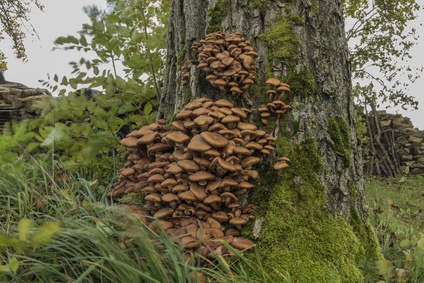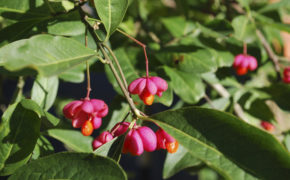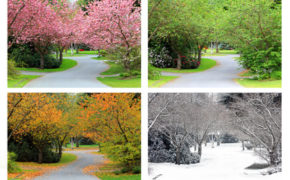
Get a quick no obligation quote It’s free and will only take a jiffy!
Caring for Your Tree: Common Diseases, Pests and Fungi to be on the Lookout For
In this post we are taking a look at the most common tree diseases, pests and fungi with the goal of helping you spot the early signs. That way you’ll be able to take the appropriate action or call in professional help before the problem becomes too advanced.
You, like most people, will naturally take great pride in caring for the trees on your land. You will have come to admire and love them, and want only the best for them.
It will therefore be important to you to be vigilant when it comes to being on the lookout for diseases and pest infestations that commonly affect trees. If you can spot the early signs of diseases, fungi and bugs then you will be ten steps ahead in making sure your tree gets the treatment it needs to have the best chance of staying healthy.
Euonymus Scale
Euonymus scale as become a widespread problem across England. It is known to cause severe dieback. The scale is a tiny, sap-sucking insect. It infests the stems and foliage.
What to look for: A yellow coloured mottling on the foliage followed by extensive leaf shedding and dieback.
Trees affected: Spindle
How to treat it: There are no known non-chemical treatments. Chemical methods such as pesticides are best used when the vulnerable newly hatched nymphs are present in June and early September.
Vine Weevil
The vine weevil is a very common garden pest. Adult weevils eat leaves, and the grubs cause widespread damage by feeding on the roots.
What to look for: Irregular-shaped notches on leaf margins during summertime. Affected plants wilt and eventually die.
Trees affected: A wide range of ornamental trees, fruit trees and container grown shrubs.
How to treat it: A variety of cultural, biological and chemical treatments are known to be effective. Control measures should be ongoing, as once the pest has been eradicated it can easily return.
Scale Insects
Scale insects have a limpet-like appearance. They suck sap, weakening the tree. There are more than 25 species.
What to look for: A sticky substance known as (honeydew) on the leaves leading to the growth of sooty, black moulds. Also look out for eggs under white waxy fibres during early summer.
Trees affected: Ornamental trees including bay laurel
How to treat it: There are numerous biological and chemical treatments including parasitic wasps and organic sprays.
Honey Fungus
Honey fungus covers a range of species of fungi that attack and kill the roots of various species of trees.
What to look for: A white fungal growth between the bark and wood, usually at ground level plus clusters of honey coloured toadstools growing on infected stumps during the autumn. Also look out for decaying roots and rhizomorphs: strand-like structures that look like roots but are in fact fungus. Rhizomorphs take on the appearance of roots and are commonly found beneath the bark of dying trees or wrapped around decaying stumps. Leaves may be smaller and paler than average and there may be cracking or bleeding of the bark near the base of the stem. Autumn colour will often appear prematurely and there could be an unusually heavy crop of fruit just prior to death.
Trees affected: Acer, birch, leylandii, beech, holly, magnolia, pear, oak, willow, lilac and more.
How to treat it: Non-chemical control in the form of physical barriers is the most effective form of treatment.
Birch Dieback
Birch dieback is a hugely significant problem caused by fungal pathogens. It is mostly confined to planted birch rather than wild birch grown naturally from seed. If you see branches dying off within the crown, then you should call in expert assistance without delay. Dieback symptoms are usually brought on either by a fungus called Melanconium betulinum or the bronze birch borer insect.
What to look for: Thinning foliage with curled leaves at the shoots of the tips. Twigs become bare then the branches and parts of the crown die. Death usually occurs around 3-5 years after the onset of the disease.
Trees affected: Birch
How to treat it: Chemical control can be effective and should continue on an annual basis as a preventative measure against borer infestation. The removal of all dead and infected branches back to healthy, green wood is also vital. Sterilisation of pruning tools is absolutely essential in order to prevent the spread of the fungus.
Chestnut Blight
People with sweet chestnut trees on their land are being urged to check their trees by the Forestry Commission following the discovery of a tree in 2016 that was suffering from chestnut blight.
Chestnut blight (Cryphonectria parasitica) is a fungus that infects and kills chestnut trees. It resulted in near complete destruction of North America’s sweet chestnut trees during the 19th and 20th centuries following its accidental introduction from Asia. It then became widespread across Europe after being introduced in the 1930s.
A fact sheet detailing the symptoms of chestnut blight can be found on the Forestry Commission website.
What to look for: Cankers, wilting and stem dieback. Bright orange pustules appear following wet spells in mild conditions.
As well as this disease, a relatively new pest has started to attack the sweet chestnut tree: the oriental chestnut gall wasp (Dryocosmus kuriphilus).It was first discovered in Kent in 2015 but has since spread to numerous places across London and South East England.
Together, the blight and the wasp have the potential to be devastating, especially where the tree is cultivated for the purpose of nut production, timber and coppicing.
Trees affected: Sweet chestnut, oak, maple
What to do: If you spot signs of either issue then you must report them through the Forestry Commission Tree Alert webpage. Do not attempt to control the symptoms yourself.
Dutch Elm Disease
Dutch elm disease is a fungus spread by a flying bark beetle known as the elm bark beetle. It bores holes beneath the bark allowing the fungus to find its way into the tree’s metabolic system, preventing it from pulling in vital nutrients.
Because the beetle only flies at around six metres above the ground, it only lands on elms that have been allowed to grow above this height. It’s precisely why regular pruning of elm trees is so important.
What to look for: During early summer clusters of leaves start turning yellow then wilt before turning brown and falling. Shoots die back from the tip and twigs sometimes turn down like a ‘shepherd’s crook’. Dark streaks appear in the outer wood of the twigs under the bark. There may be rings or spots.
Trees affected: Elm
What to do: A dead or diseased elm tree can pose a threat to other nearby elm trees, so you must move quickly. Dead wood is the ideal breeding ground for the elm bark beetle, so it must be removed and burnt immediately it is spotted.
Verticillium Wilt
Verticillium wilt is a soil-borne fungal disease. It penetrates trees through the roots leading to dieback and wilting leaves.
What to look for: Yellowing and shrivelling of lower leaves. Brown or black streaks under the bark. Branch dieback.
Trees affected: Elder, maple and various ornamental trees
How to treat it: Non-chemical control such as care in spreading soil and weed control are the best methods. There are no known effective chemical controls.
Oak Decline
Oak decline has been around for nearly one hundred years in the UK but in the past few years has seen a worrying increase in the number of affected trees.
What to look for: A dark fluid weeping down the trunk emanating from cracks in the bark. Trees can die within 4-5 years.
Trees affected: Mature (over 50 years old) pedunculate oak, sessile oak and hybrids of the two. Some younger trees have been affected and sometimes other oak species.
Ash Dieback
Ash dieback (Chalara Dieback of Ash) is a fatal and very common fungal disease. It presents a major threat to UK woodland together with trees growing in parks and gardens. The disease causes ash trees to shed their leaves and usually leads to their death. Trees of all ages are affected and the disease has spread rapidly across Europe.
What to look for: Black blotches at the base of the leaf and midrib. Wilting leaves. Stems may show small lens-shaped lesions. Necrotic spots may appear on the bark and branches eventually forming cankers. Peeled bark may reveal a brown-grey discolouration. Generally you will see extensive dieback of shoots, twigs and branches.
Trees affected: Ash
What to do: All signs of ash dieback must be reported without delay. If the tree is in your garden then make your report to The Animal and Plant Health Agency. For established woodland trees you will need to report the issue to the Forestry Commission.
The Importance of Professional Tree Care
When it comes to the health and well-being of your trees, there is no substitute for professional advice. If you spot any of the signs of disease as set out above, don’t hesitate to call in the services of a qualified tree surgeon.
At T.H. Tree Services we have been dealing with tree care for over a decade and are well-placed to help you with any problems you are facing with your trees or shrubs. For a free consultation and helpful, friendly advice, give us a call on 01268 642814.
I can thoroughly recommend TH Trees. Their professionalism and communication has always been paramount. The jobs undertaken carried out to my satisfaction. Above and beyond.
Thank you Jo for your kind review, it's always a pleasure to be of assistance with your trees.








